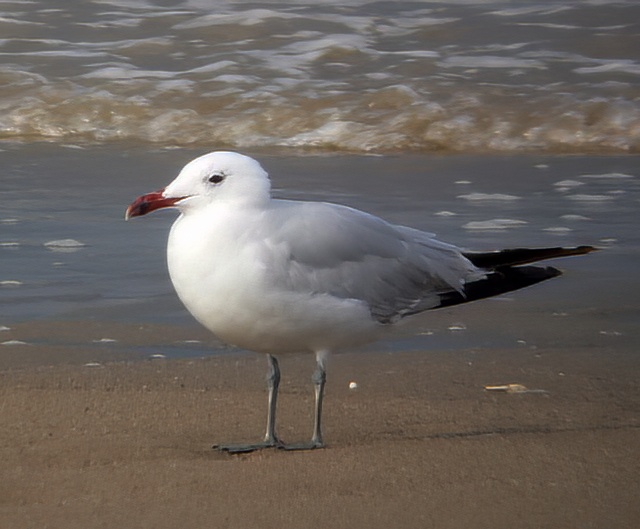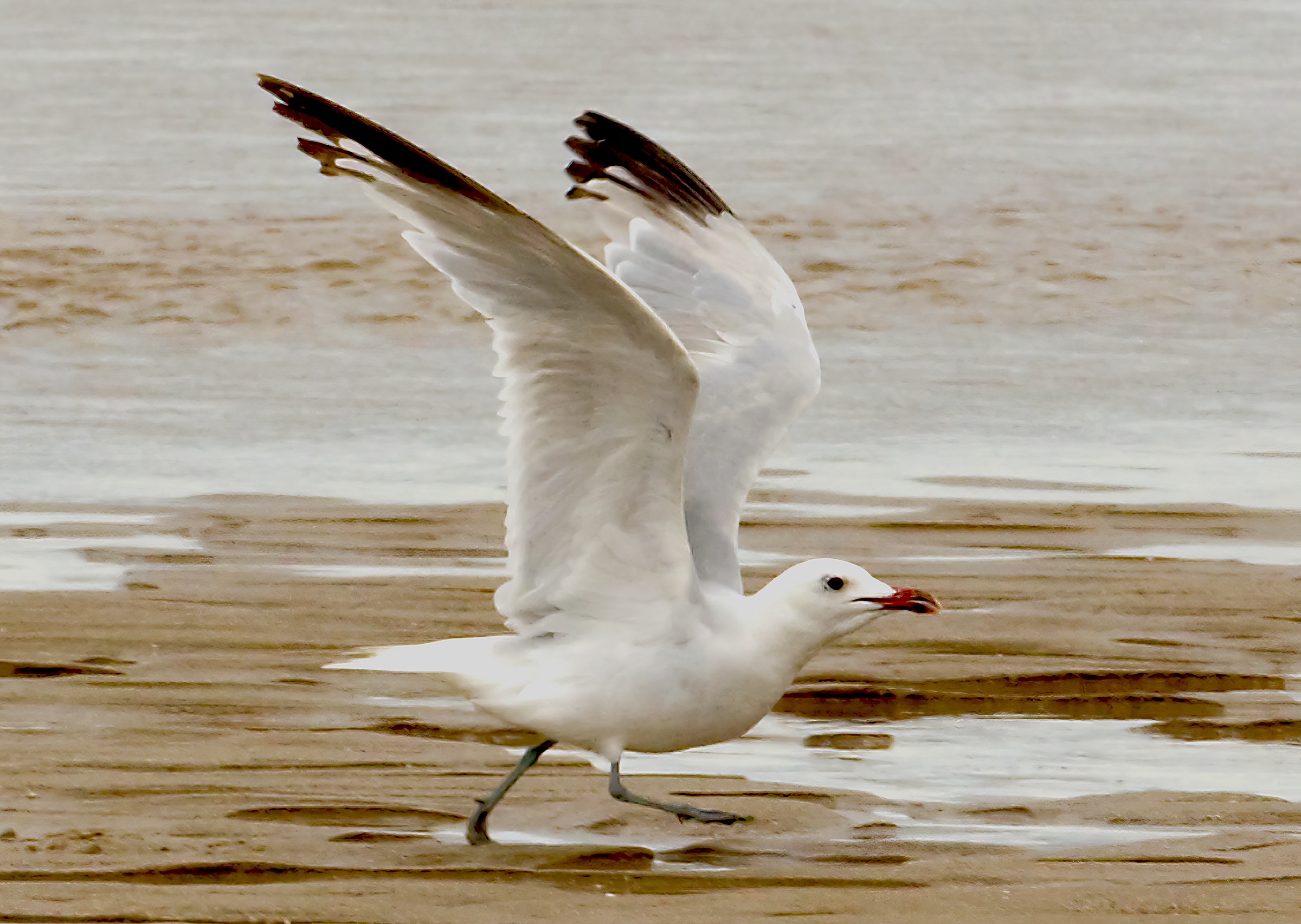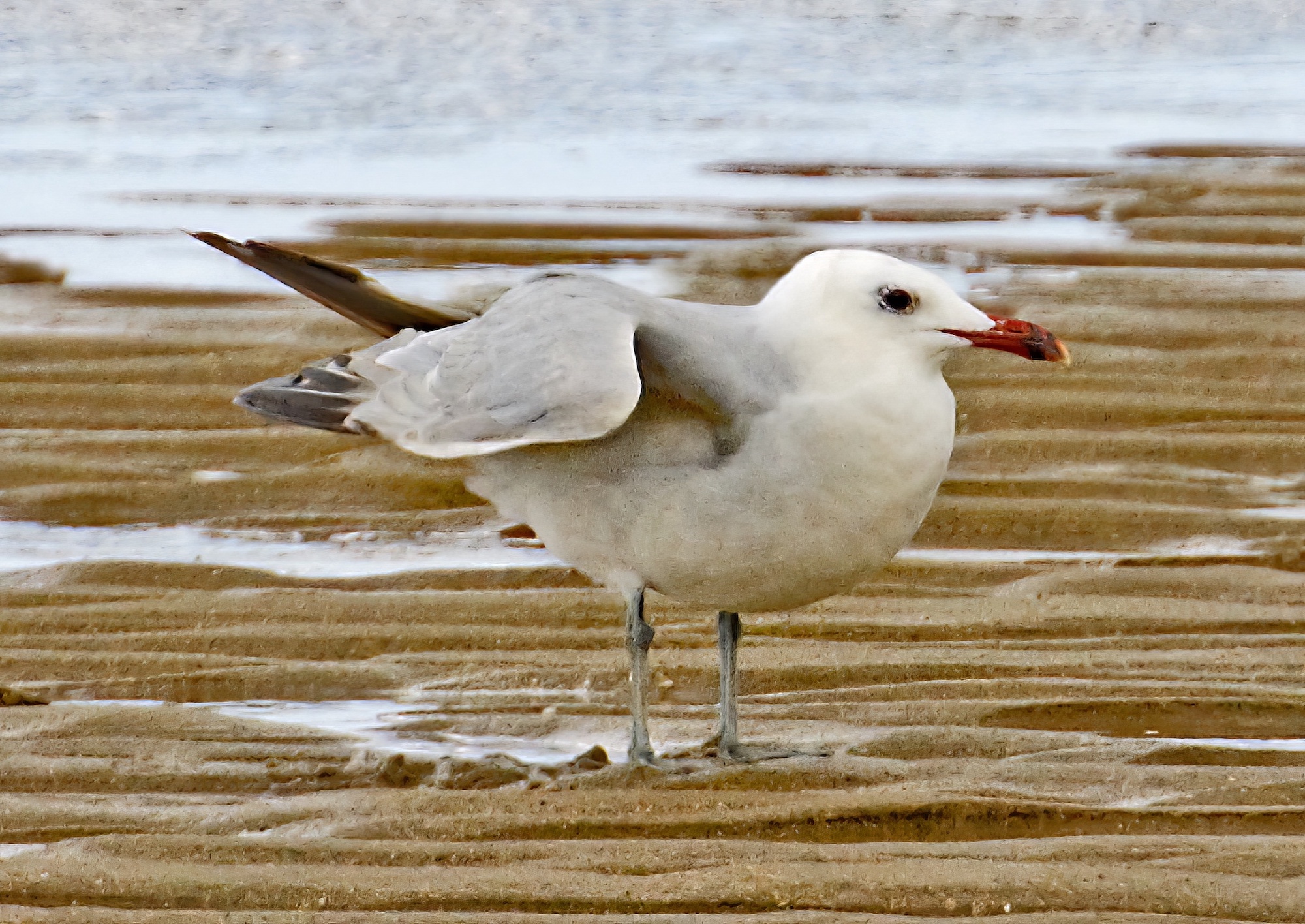Audouin's Gull Icthyaetus audouinii



One county record of a near-adult or probable 3CY bird on the evening of August 15th, 2008 at Huttoft Bank, seen just briefly there before flying off to the south. Thankfully it was relocated in the Chapel Point area at 15.30h, August 17th. It was resting on the beach but then flew out to sea and was lost to view before being seen out on the sea at 20:15 where several people managed to catch up with it around dusk. The frustration amomg observers was evident in this comment from the LBC Forum at the time: “Firstly (it showed) at around 15:30 when it was resting on the beach - it flew off out to sea and was lost from view. A growing group of birders gathered throughout the rest of the day at Chapel Point and at about 20:15 in the gathering dusk it was spotted it some distance away on the sea where it bobbed about giving only brief views”.
On 18th August the bird was then re-found at 11:20 about 2 miles north of Chapel Point where it showed well on the beach until 12:00 before again flying out to sea, although it was seen again later that afternoon. The bird proceeded to show intermittently and would disappear for extended periods out to sea. It was last seen about a quarter of a mile south of Chapel Point on 23rd August where it was watched loafing on the beach with Sandwich and Common Terns between 06:30 and 08:00 when it was then disturbed by a dog walker and flew out to sea where it was eventually lost from view never to be seen again.
The first record for Britain wasn’t until 2003 but this was the 5th individual since then and there have now been eight British records in all up to 2018. Formerly a rare and localised species, it has undergone significant expansion in the Mediterranean basin largely due, it is thought, to the availability of waste from fisheries. Numbers have risen from around 1000 pairs in the 1960s and 1970s to a global population of more than 21,000 pairs in Europe, as well as a few small colonies in North Africa. The majority winter along the Atlantic seaboard from Morocco to Senegal and Gambia.
| Site | First date | Second date | Count | Notes |
| Huttoft Bank | 15/08/2008 | - | 1 | Near-adult |
| Chapel St. Leonards | 17/08/2008 | 23/08/2008 | 1 | Near-adult, same bird. |
(Account as per new Birds of Lincolnshire (2021), included September 2022)

